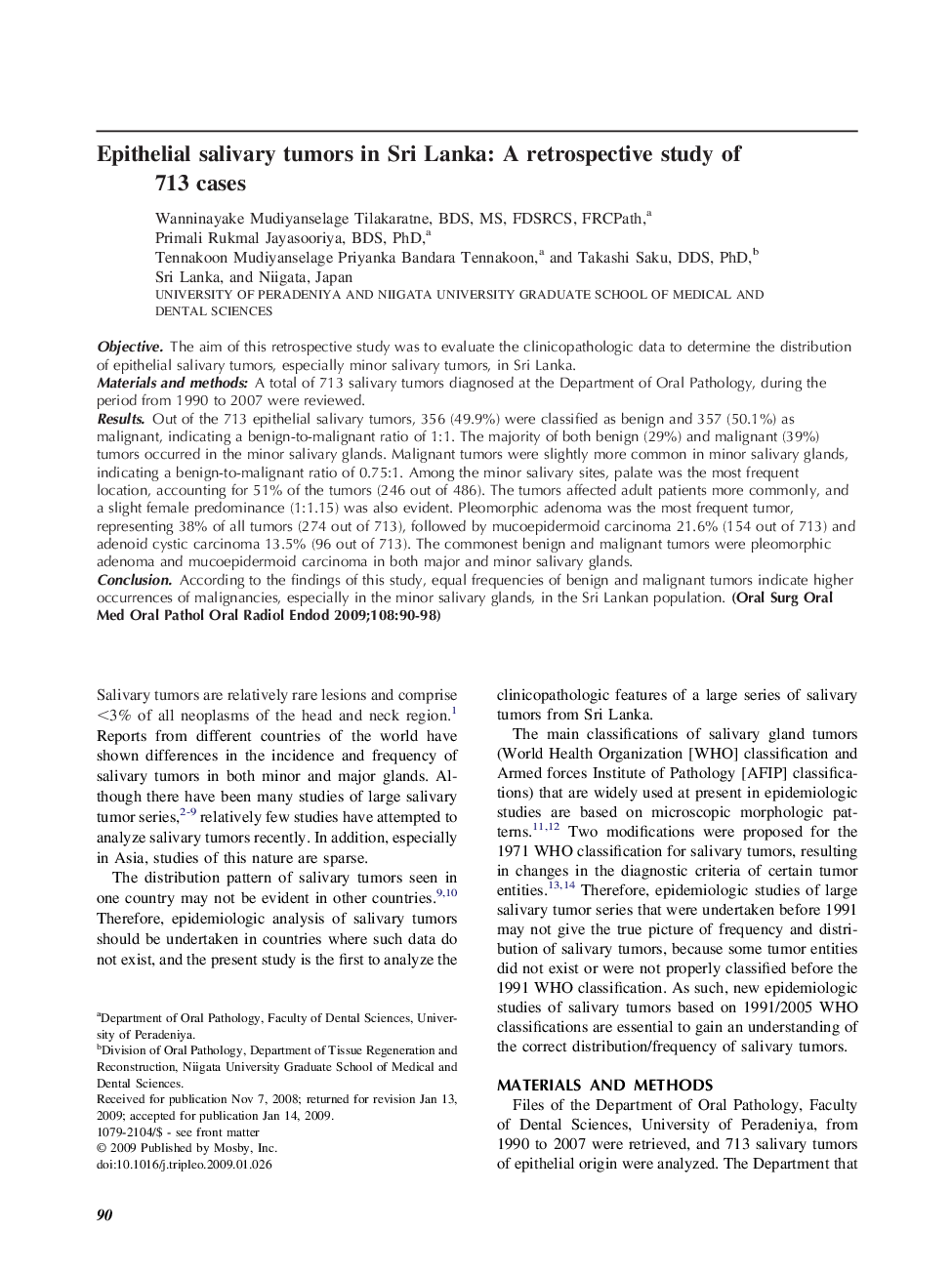| Article ID | Journal | Published Year | Pages | File Type |
|---|---|---|---|---|
| 3168191 | Oral Surgery, Oral Medicine, Oral Pathology, Oral Radiology, and Endodontology | 2009 | 9 Pages |
ObjectiveThe aim of this retrospective study was to evaluate the clinicopathologic data to determine the distribution of epithelial salivary tumors, especially minor salivary tumors, in Sri Lanka.Materials and methodsA total of 713 salivary tumors diagnosed at the Department of Oral Pathology, during the period from 1990 to 2007 were reviewed.ResultsOut of the 713 epithelial salivary tumors, 356 (49.9%) were classified as benign and 357 (50.1%) as malignant, indicating a benign-to-malignant ratio of 1:1. The majority of both benign (29%) and malignant (39%) tumors occurred in the minor salivary glands. Malignant tumors were slightly more common in minor salivary glands, indicating a benign-to-malignant ratio of 0.75:1. Among the minor salivary sites, palate was the most frequent location, accounting for 51% of the tumors (246 out of 486). The tumors affected adult patients more commonly, and a slight female predominance (1:1.15) was also evident. Pleomorphic adenoma was the most frequent tumor, representing 38% of all tumors (274 out of 713), followed by mucoepidermoid carcinoma 21.6% (154 out of 713) and adenoid cystic carcinoma 13.5% (96 out of 713). The commonest benign and malignant tumors were pleomorphic adenoma and mucoepidermoid carcinoma in both major and minor salivary glands.ConclusionAccording to the findings of this study, equal frequencies of benign and malignant tumors indicate higher occurrences of malignancies, especially in the minor salivary glands, in the Sri Lankan population.
